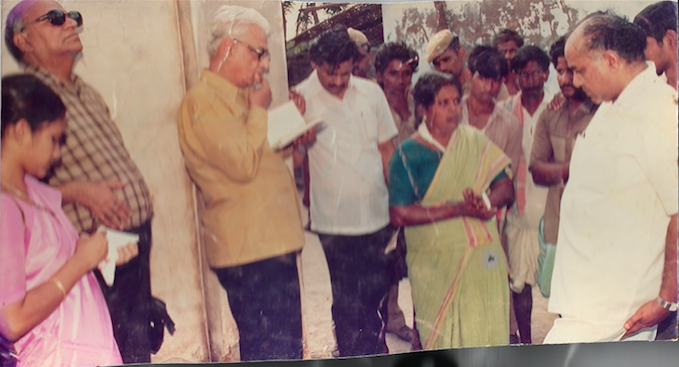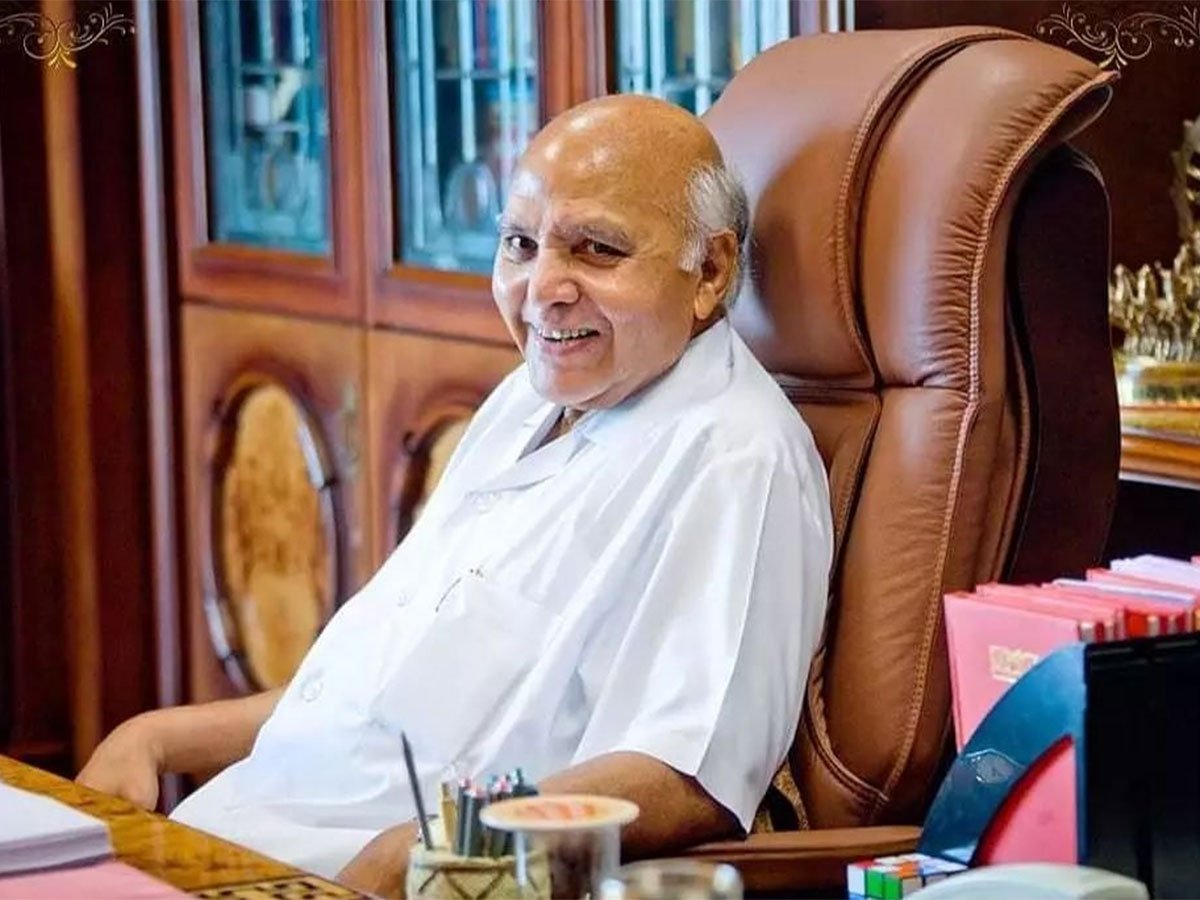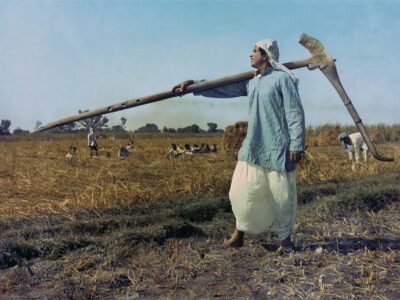Ramoji Rao – His penchant for perfection, obsession with colour red and his old world principles that kept him ahead in the media industry for decades – senior journalist Aruna Ravikumar writes her experiences with the self made media baron
Mistakes circled, information added, comments like ‘Who is the fool who wrote this?’ and occasional praise like ‘good’ written with the unmistakable pink pen on various editions of the newspaper reached the staff from the chairman’s desk every morning where corrective action was mandatory. It wasn’t uncommon to see newspapers full of pink pen marks from top to bottom indicating that there was not a single news item that missed his attention. The employees, heads of departments, journalists who worked at the desk and reporters immediately became alert and took care not to repeat mistakes. Ramoji Rao, the media baron who built several businesses including his newspaper from scratch was indeed an awe- inspiring presence whose hard work and yen for perfection resulted in the building of a media group that despite being a vernacular one made a splash nationally. ‘Eenadu’ has been the life line of Telugu speaking readers ever since its inception in 1974 maintaining high standards in terms of language, credibility, coverage and commitment. The moment the man with an imposing presence in the all-white attire that included his footwear entered the building there was an intense feeling of awe and people become instantly alert and respectful.

Starting my journalistic career with Newstime, the English daily of the Eenadu group which unfortunately shut down, I got to meet him many a time as I worked on the same second floor office where his room was located. There were many stalwarts of journalism for both Eenadu and Newstime, who were part of Ramoji Rao’s team which included Chalasani Prasada Rao, Vakati Panduranga Rao, MVR Sastry, S. R. Ramanujan, Shastri Ramachandran and C.S.G Prasad who discussed threadbare many events of importance adding their enlightened perspective. It was an animated dialogue among informed journalists who sat in the long corridor with their desks all in a long row while desks with other employees dotted the opposite side. Many prominent journalists left the group over differences of opinion but Eenadu continued to adhere to the stringent standards set by its chairman, giving subscribers the same reading experience over decades.

Maybe it was the stint in the United Communist party as a youth where he saw many people from his region serve the people selflessly (which had the red for revolution) or his penchant for the crimson sun-rays that embellished the logo of publications and banners under the name Ushodaya publications, that impacted Ramoji Rao to embrace the colour red, one never knows. There was a predominance of red surrounding him, his office, the upholstery in the hotels in the film city and his red diaries with the names of the recipients etched out in gold that he sent out to prominent persons each year. Known for his punctuality, long working hours and ability to put together a right team, Ramoji Rao’s meteoric rise to fame from the small village of Pedakurapadu in Andhra Pradesh and his multitude of companies from chit funds to films, pickles to hotels, is reflective of his multifarious interests and zest for building viable organizations.
I vividly remember travelling with him to riot hit areas of Vijayawada, Gudivada and Eluru, post the Ranga riots in Vijayawada in 1989 December, when caste clashes erupted over the killing of Congress leader Vangaveeti Mohana Ranga Rao, a Kapu leader with a mass following. There were retaliation killings and burning of property that belonged to Kamma leaders in one of the worst riots till date, and Ramoji Rao who was then President of the Editors Guild of India brought along a delegation of senior journalists which included S. Sahay and K. R. Malkani among others to visit Vijayawada where I worked for about two years. We not only visited Jayapuram village which was entirely destroyed in the riots but his native village and the house of Raavi, Sobhanadri Chowdary, a politician from Gudivada. A portion of our office was also set afire. Since I was the only woman in the group of journalists and photographers who accompanied him, Ramoji Rao graciously insisted that I go along in his car. I got to see his humorous side on this trip as he regaled us with his experiences and informed us about the importance of each place in the coastal areas. Making me a junior reporter comfortable with the senior journalists, enquiring about my welfare and joking about frequent roadside stops while travelling with senior citizens, made me aware of Ramoji Rao’s generous and sensitive nature as never before.

With an Editors Guild team in riot-ravaged Vijayawada in 1989
When ETV was launched I was the first woman journalist to have joined a broadcast channel covering politics and one of the very few people to be taken back into the organization after having resigned from the organization. I recall another incident here where he had apparently praised the very first episode of my series called “Sopaanaalu”(steps to the pinnacle) which had me interview eminent Telugu personalities. This was the very first episode featuring the eminent musician Dr. Mangalampalli Balamuralikrishna. I got to know about his positive review from sources present at the meeting where he had heaped praise. I was elated knowing that appreciation from him was rare and did not come very often and full of anticipation when I got the opportunity to meet him in person a few days later. Imagine my surprise (shock) when he did just the opposite in person. What I received was not praise but a list of all the things that I had missed out and how I could have made the interview outstanding. Coming out of his room it dawned on me that he rarely praised people in person and was always expecting them to correct flaws and, better their own performance. There was much to learn from this hard taskmaster who never relaxed even a wee bit despite towering achievements. His aim was always to be’ better than the best’ a learning that stayed with me over the years.
Pressure is the ‘keyword’ for all those who worked with him. The many media organizations that sprang up in the state after Eenadu, had journalists who worked with him at some point of time. It is said that those who worked with him can work anywhere in the world because they know how to handle pressure. Although I moved on from the organization because of my own personal compulsions, I cherish the learnings that I got from the strict conditions and standards set by him. They were not without hiccups but they had more to do with the people ‘in-between ‘than him. Ramoji Rao was an inspiration for people in the media, industry, and films having succeeded in all three. The Ramoji Film city where we underwent training for ETV’s first live- coverage, is today a sprawling 1000 -acre structure that is a one stop- shooting solution for feature films, a venue for weddings and events and a fun place for children’s summer camps and tourists from different parts of the world. ETV too has ventured into multiple languages making it a nationally renowned group. Everything that Ramoji Rao built emerged out of his extraordinary larger -than- life vision and remains a lasting contribution to society. Legends like him are rare to come by and find reflection in Emerson’s words “Every great institution is the lengthened shadow of a single person. The person’s character determines the character of the organization.” Ramoji Rao lives on undefeated by death as in life. The institutions that he built will ever remind us of the perfectionist who provided not just livelihood but life -lessons to thousands of people. He may have moved on, but his spirit remains, resplendent and bright as a beacon light.
















